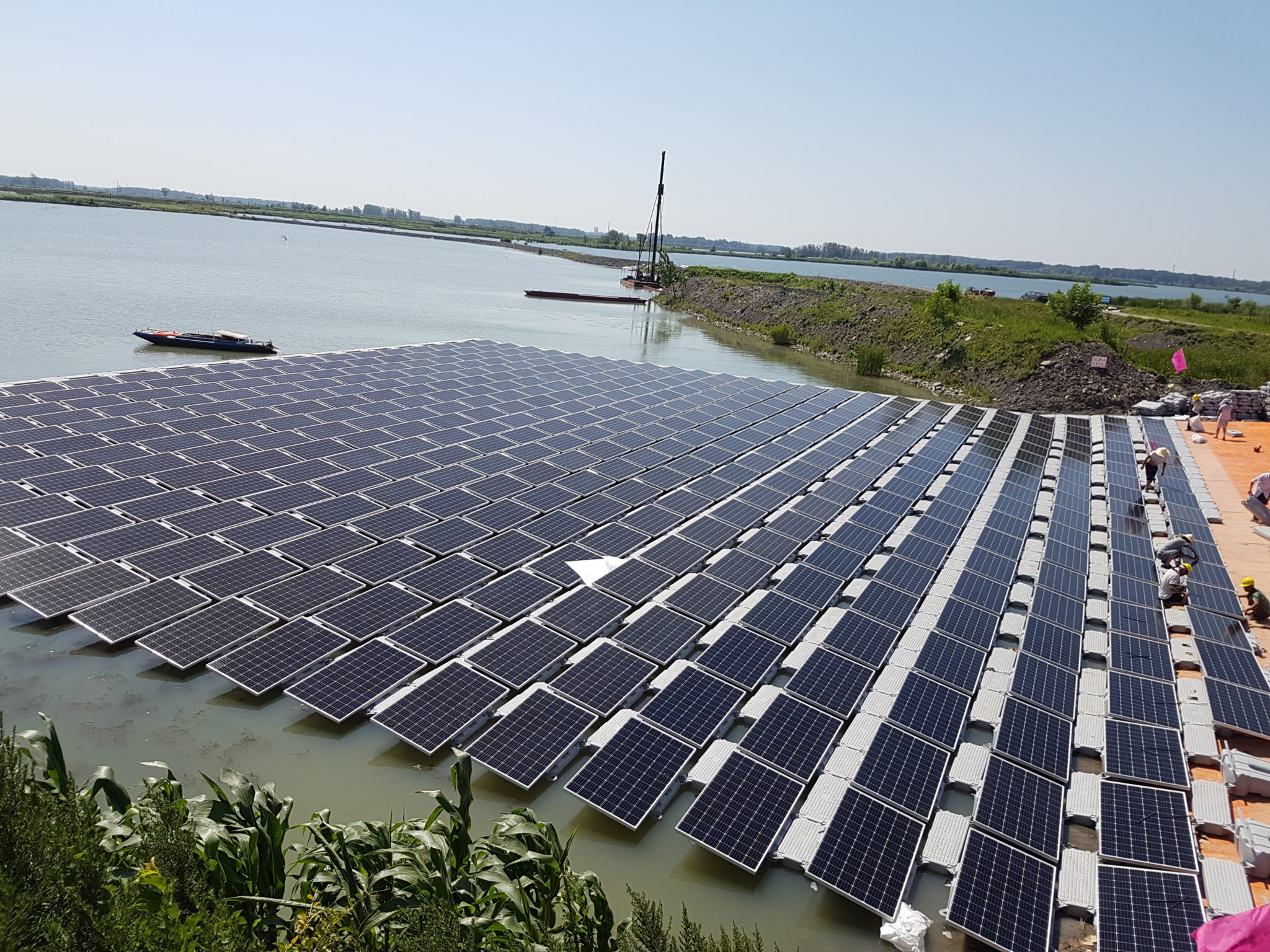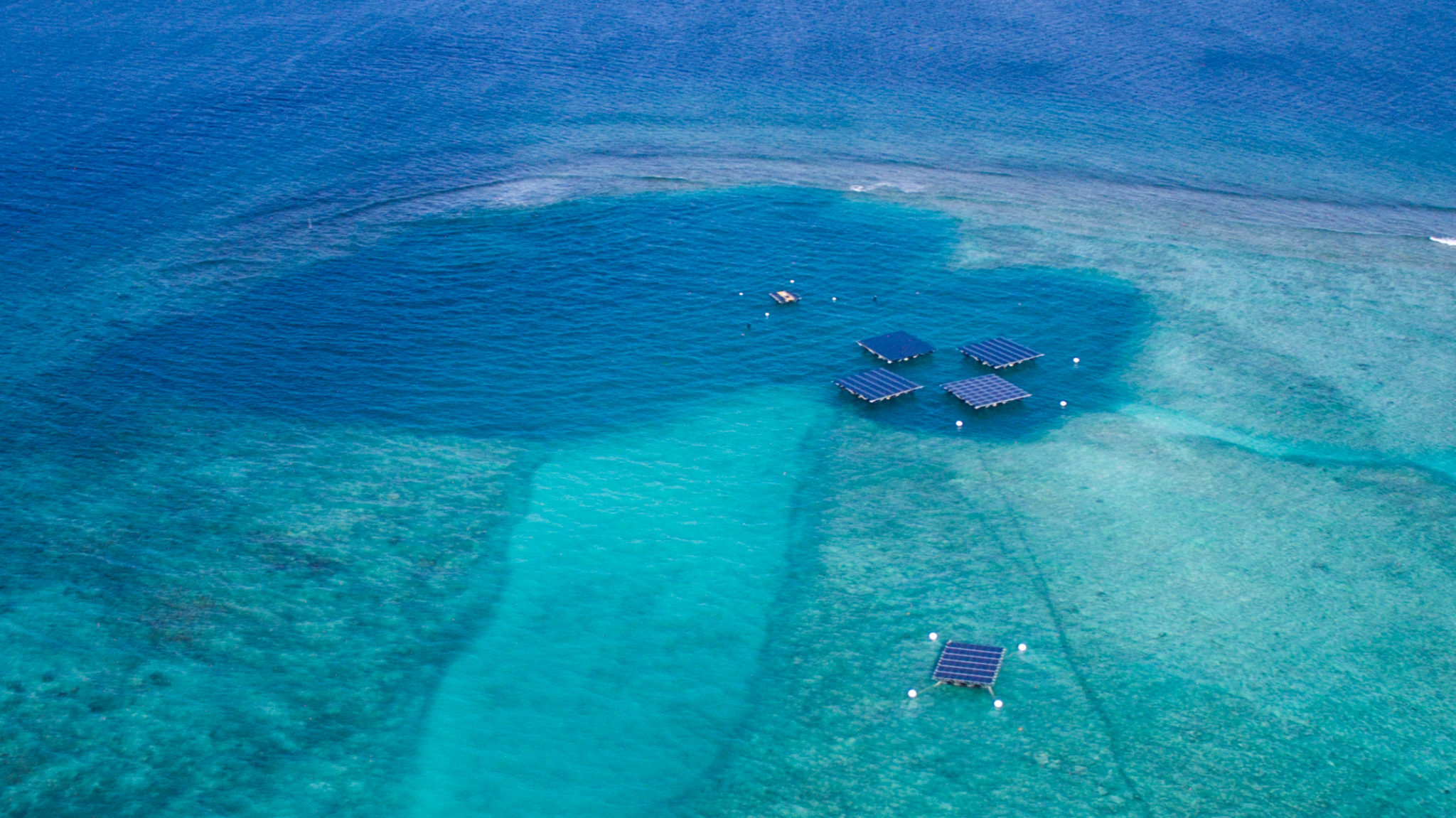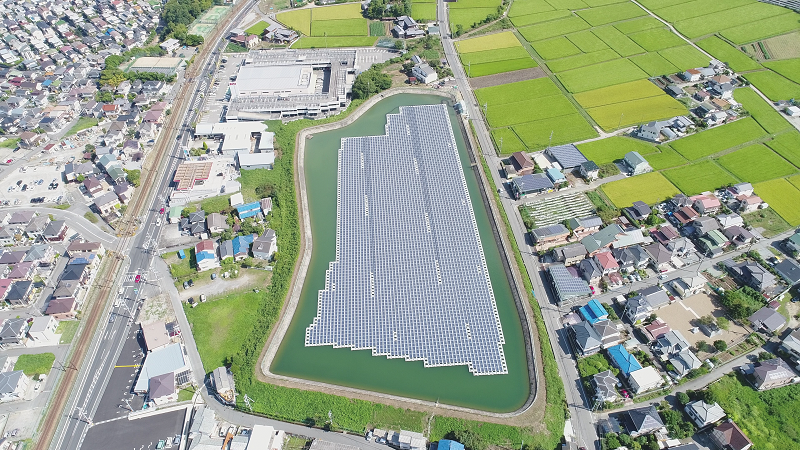Floating PV was once dismissed as a quirky niche that would be largely relegated to land-scarce countries such as Japan, which has played a pioneering role in commercializing such technologies over the past few years. However, the segment now appears poised for a potential breakthrough, as East Asian markets such as China, South Korea and Taiwan increasingly demonstrate the feasibility of installing solar panels on water surfaces at scale. And new market drivers are emerging, as interest in floating systems starts to ripple beyond the region to other parts of Asia and beyond, setting the segment’s early skeptics on their heels.
“Floating solar is a proven market sector now… because of success in Asia, there will be multiple gigawatts in the pipeline,” argues Christine Beadle, Senior Analyst, Solar Supply Chain at IHS Markit. “It is global, but you’ve got the confidence now in Asia.”
A number of countries have announced plans to potentially deploy massive amounts of floating solar capacity over the past year. In late 2017, for example, the Solar Energy Corporation of India (SECI) announced plans for a 10 GW floating solar tender. In December, Kerala State Electricity Board Limited completed a 500 kW floating PV system, and Indian companies such as the JSW Group and West Bengal Power Development Corporation Limited have announced new pilots, projects and pipelines in the months since. Although the question of how much capacity SECI eventually auctions off will hinge heavily on the success of these initial experiments, India nonetheless could be key to further stoking global interest in floating PV technologies in the next decade.
“If the pilots don’t go well, it’s not going to go in,” says Beadle. “But in the next three or four years, you could see other countries come to the forefront just because you have this potential out there.”
Fake floats
IHS Markit statistics suggest that global cumulative floating solar installations will reach about 400 MW by the end of the first quarter of this year. Beadle acknowledges that this “doesn’t seem like much,” particularly in light of some of the large projects that have been built over the past year, particularly in China. Last May, for example, Sungrow connected 40 MW of floating PV capacity to the grid in China’s Anhui province. And within the next two months, China Three Gorges will connect the second part of a 150 MW array at an adjacent site. But there is a reason why the global cumulative total still has yet to surpass just half a gigawatt.
“You have to take out all this stuff that’s over canals in the air in India — that’s not floating… and you have to take out all the stuff on piles over fish ponds in China,” Beadle explains. “That’s why the numbers are so small. But the potential is huge.”
Japan — where the floating sector truly started to gain momentum with the installation of multiple small projects from the midpoint of the decade — remains among the world’s most active markets. And competition is heating up, with players such as Mitsubishi Electric and China’s Sungrow now chipping away at the initial dominance of pioneering companies such as Kyocera TCL Solar.
“(It’s) due to land constraints,” says Naoaki Eguchi, partner at Baker & McKenzie in Tokyo, noting that many ponds and reservoirs are ripe for development throughout the country. The multinational law firm advised on some of Kyocera TCL Solar’s earliest floating PV projects in Japan back in 2015. But Eguchi also sees new potential market drivers emerging. “Utilities are thinking about using water power dams as new floating solar spaces,” he observes.
Kyocera TCL — a venture between PV module manufacturer Kyocera and Japanese leasing and financial services provider Tokyo Century Corporation — still sees “great potential” in Japan, according to a Kyocera spokesperson. At the time of publication, the developer was set to complete a 13.7 MW floating solar array on a dam reservoir in Chiba prefecture. It also plans to build 20 new floating PV projects in the country over the next three years, but it has not revealed specific capacity figures.
“The floating solar market will continue to grow in countries and regions which have abundant unused water surfaces like Japan,” the Kyocera spokesperson says.
New technologies
South Korea is one such country. Like Japan, the deployment of floating PV on the peninsula has largely been driven by land constraints. But the desire to put panels in the water is clear, with Korea Water Resources Corporation (K-water) — a state water-management agency — backing a number of floating PV projects in recent years.
The country is also at the forefront of introducing new technological innovations to the floating PV market. Local developer Solkiss, for example, announced plans last summer to work on a massive 80 MW floating PV project with Hanwha Q Cells. The installation will feature engine-powered rotating floating platforms to track the sun.

“It’s like a single-axis tracker on land, except they’re moving the whole thing,” Beadle enthuses. “Single-axis tracking has taken over ground mount — maybe this is something that other people will take up.”
China, meanwhile, continues to lead the global floating PV sector in the development of large-scale arrays. The government has already auctioned off more than 1 GW of floating PV capacity for development under its Top Runner program. But the key catalysts for deployment differ slightly from land-scarce South Korea and Japan. The country has lots of space for ground-mount PV, but many of the best sites are situated far from the grid or points of consumption. But it holds tremendous potential to repurpose locations that have been damaged by industrial development, such as otherwise unusable coal subsidence sites.
“It’s just the rehabilitation of dead space — nobody is using that land,” explains Harold Meurisse, branch manager for Ciel & Terre ASEAN & Oceania.
The French floating platform supplier has expanded rapidly in recent years, with operations on every continent. However, the company — which played an instrumental role in building many of Japan’s earliest forays into floating PV — has been particularly active in East Asia. Since launching operations in Taiwan a little over a year ago, it has secured a pipeline of roughly 120 MW, for example.
Fresh foundations
Now the company is making a big push into the Southeast Asian market. It is currently considering a potential pipeline of more than 300 MW throughout Thailand, Malaysia, Singapore, Vietnam and Indonesia. It has also helped to establish a new standard for projects in the region, which involves providing a main platform for the PV module and a secondary floater for O&M purposes. It hopes that this approach — which has been embraced at a 1 MW floating PV test bed launched last year by the Solar Energy Research Institute of Singapore (SERIS) — will lay the foundations for a thriving floating PV market throughout the region.
“One of the threats for us in the market is the local competition,” Meurisse acknowledges. Ciel et Terre has therefore started discussing industry best practices with SERIS, in part to ensure that new market entrants do not make the kind of mistakes that could scare away potential investors in the regional market’s earliest stages of development.
Since early 2017, SERIS has evaluated a range of module, floater and inverter configurations at its test bed in Singapore, which it runs in cooperation with the Economic Development Board and Public Utilities Board. The facility — which features 10 pilot projects of varying size by companies such as Sunseap, REC, Sharp and Upsolar — has already yielded data suggesting that floating PV projects generate more electricity per year because of the cooling effect of the water.
“The heat loss coefficients for those systems are generally in the range of 40 to 50 W/m² K, which is about 30-60% higher than the typical values of 30 W/m² K for a well-ventilated rooftop system,” SERIS says in its 2017 annual report.
It believes that evaporation from reservoir surfaces can drive up the annual energy yield of floating PV systems by as much as 10% to 25% over ground-mounted systems. However, it also notes that the evaporative cooling effect varies significantly depending on the type of floating platform, with the greatest results seen in systems that provide the most space between the modules and the surface of the water.
SERIS says early results from the test bed also suggest that bifacial modules tend to produce more electricity on rooftops than in floating arrays. In addition, the organization — which sees terawatt-scale potential for floating PV throughout the world —is studying the effects of humidity, salt spray and fluctuating weather patterns on the output of floating solar systems. It is also looking at the translational and rotational movement of floating structures along three perpendicular axes each, as well as the potential environmental impacts of installed systems.
Asian ambition
Such research will undoubtedly help Ciel et Terre to more effectively tailor its proprietary Hydrelio floating platforms to the unique site conditions it sees throughout Southeast Asia. It plans to start producing its new Equatorial variant — which is made to lower anchoring costs by way of a more aerodynamic design that reduces wind loads — on a new, scalable production line that will launch in Thailand in May.
“We’re starting with Thailand, but the pipeline of projects we are studying is quite high,” says Meurisse.
Ciel et Terre also sees high potential in Malaysia, where 563 MW of solar capacity was awarded to developers in December. But it is particularly keen on Thailand, where it is mostly targeting PV projects for self-consumption purposes, because it can sidestep many of the regulatory issues that are associated with rooftop solar development in the country.

The company is also interested in opening a production line in Vietnam, a country that Meurisse says has big potential despite “some bankability issues with the PPAs.” Ultimately, Ciel et Terre’s decision to do so hinges on whether it ends up working on 50 MW of capacity at an undisclosed hydroelectric dam with a subsidiary of major utility Electricity of Vietnam (EVN). It expects the Vietnamese authorities to make a decision on whether to award the project to the EVN unit by mid-May, from which point it will start producing its standard Hydrelio floats in the country, but not the equatorial variant or another new lightweight option it has recently designed.
The potential to install floating PV arrays at hydroelectric dams is also why Ciel et Terre is tentatively exploring opportunities in Myanmar. Meurisse acknowledges that the company’s activities in the country are still very much at the feasibility stage, primarily due to difficulties in securing financing and the government’s ongoing reluctance thus far to commit to formal PPAs. However, he says that the potential to use floating solar to offset falling hydroelectric output during the dry season is huge. But the company is convinced that Myanmar, along with Cambodia and Laos, will “rise” at some point in the years to come. “It’s very strategic for our company to be set up (in Myanmar),” he says.
Indonesia, meanwhile, is also an important target in Ciel et Terre’s Southeast Asian expansion plans, for self-consumption and grid-connected projects. The company is already on board to work with Abu Dhabi-based clean energy giant Masdar, which recently signed a project development agreement with a unit of Indonesian utility PT PLN to build 200 MW of floating PV capacity on the island of Java.
Meurisse acknowledges that Indonesia’s policy environment is still far from mature. But energy demand is high throughout the archipelago, and floating PV could be an ideal solution in a country in which ground-mount solar investors often struggle to identify the owners of potential development sites. “(Indonesia) has a very singular position in our strategy,” he says. “More and more, solar projects are happening (there).”
Asked about recent efforts in the Netherlands to install solar panels at sites in the North Sea — as well as a handful offshore PV projects in the Maldives by Austrian floating systems specialist Swimsol — IHS, Kyocera and Ciel et Terre were unanimous in expressing measured skepticism over the potential to install solar projects on the open ocean.
“For now, I would not consider the open sea as a viable option,” Meurisse says, pointing to a range of freshwater sites that are open for development such as hydroelectric dams, reservoirs, wastewater treatment ponds and even rice paddies. “The potential in Asia is crazy.”
This content is protected by copyright and may not be reused. If you want to cooperate with us and would like to reuse some of our content, please contact: editors@pv-magazine.com.



1 comment
By submitting this form you agree to pv magazine using your data for the purposes of publishing your comment.
Your personal data will only be disclosed or otherwise transmitted to third parties for the purposes of spam filtering or if this is necessary for technical maintenance of the website. Any other transfer to third parties will not take place unless this is justified on the basis of applicable data protection regulations or if pv magazine is legally obliged to do so.
You may revoke this consent at any time with effect for the future, in which case your personal data will be deleted immediately. Otherwise, your data will be deleted if pv magazine has processed your request or the purpose of data storage is fulfilled.
Further information on data privacy can be found in our Data Protection Policy.